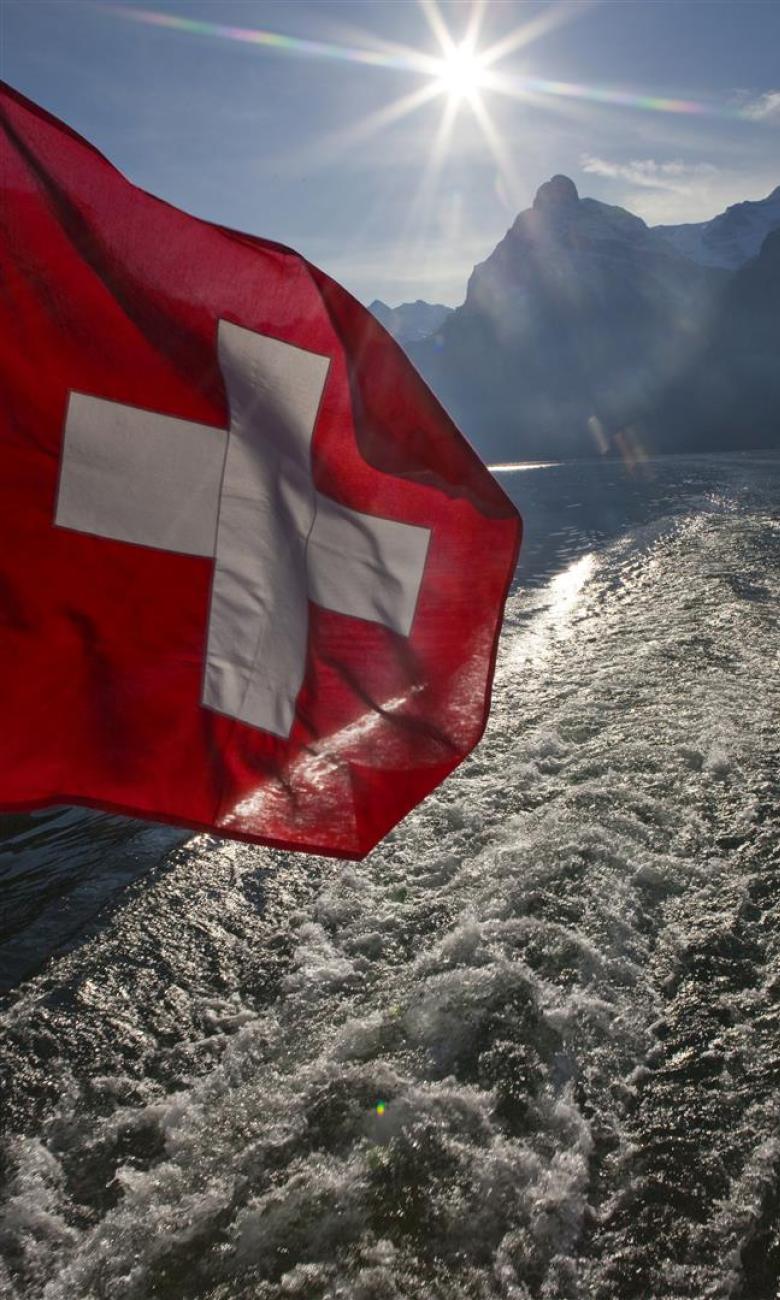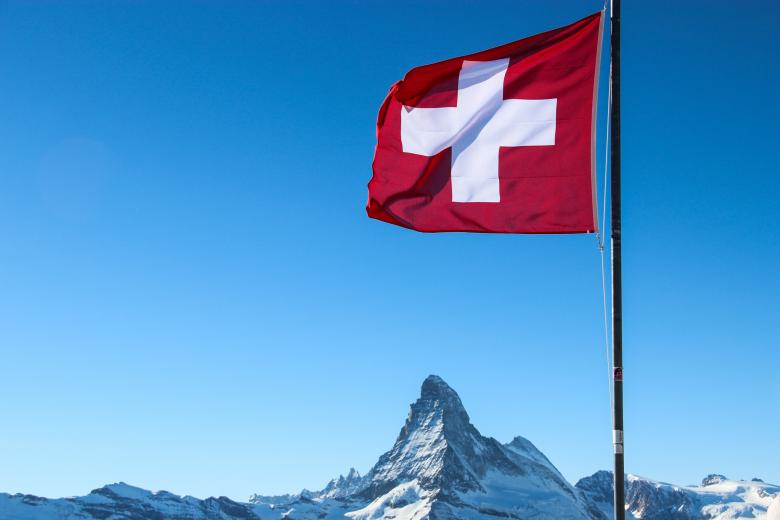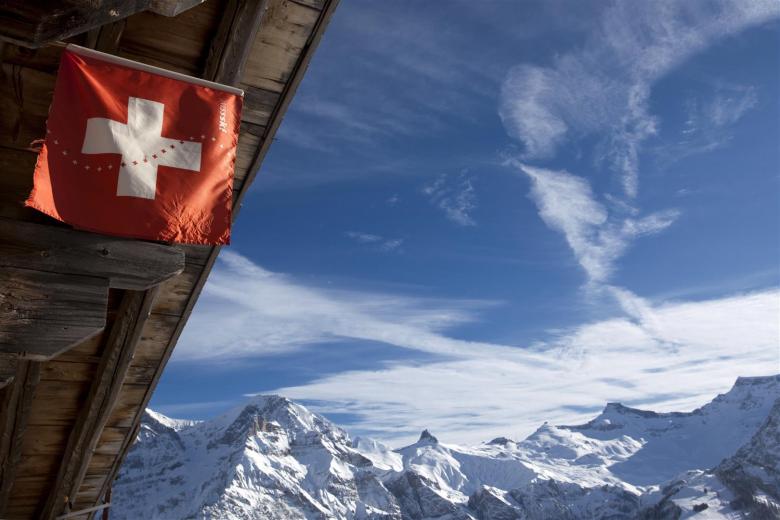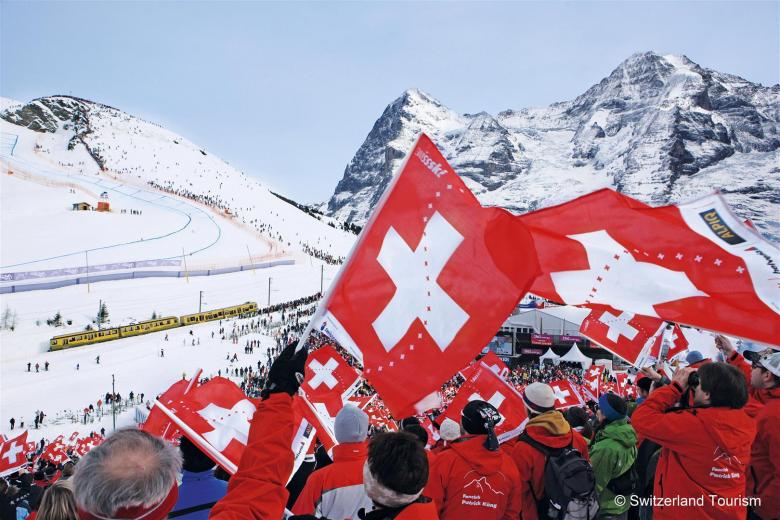The Swiss flag – a plus for the country
The Swiss flag rarely goes unnoticed. Square in shape, this striking flag composed of a white cross of strictly defined proportions on a red background is not just a distinctive visual icon – it also happens to have a fascinating story.
But if the Swiss flag sits perfectly with certain specific aspects of the country, such as its four national languages, it is the result of pure chance. The national flag, known today throughout the world, has seen turbulent times in the course of the last seven hundred years. Officially adopted in 1848, the emblem of Switzerland gained importance as early as 1339, when the white cross on a red background became the symbol of cohesion between the Waldstätten (Uri, Schwyz, Unterwalden and Lucerne) and Bern during the Battle of Laupen.
A symbol adopted by the military
It was thus in times of war that the 'federal cross' was first used, so that combatants could easily recognise one another on the battlefield. Later, in 1800 and 1815, General Niklaus Franz von Bachmann gave his troops the white cross on a red background as a rallying sign. In 1815, the motif of the federal seal (which was first affixed to the Federal Charter) included a raised white cross with arms of equal length on a red background surrounded by the cantonal coats-of-arms.
Subsequently, it was under the leadership of Guillaume-Henri Dufour that a military flag common to all of Switzerland was adopted in 1840, 49 years before the Federal Council specified that the four branches of the cross, equal in length, must also be one sixth longer than they are wide. Meanwhile, during the period of the Helvetic Republic (1798–1803), Napoleon Bonaparte imposed on Switzerland a tricolour of green, red and yellow, which was abandoned immediately after the fall of this regime.

Switzerland and the International Committee of the Red Cross
The resemblance between the Swiss flag and that of the Red Cross is striking. Along with Henri Dunant, General Guillaume-Henri Dufour was one of the founders of the International Committee of the Red Cross in Geneva in 1863. The link between the flag of Switzerland and that of the humanitarian organisation is therefore visually very strong. General Dufour has left other legacies behind: take for example the name of the nation's highest peak, the Dufour Peak, which rises to 4,634 metres and is located just beside the Dunant Peak.

The Swiss flag – a source of national pride
It's hard to travel around Switzerland without encountering the national flag. Naturally it can be seen flapping proudly in the wind on the Federal Palace in Bern, but you will also see it on the balconies of farms, on planes and in mountain refuges. The Swiss cross is also found on car number plates, as a symbol of the link between the four corners of the country and the strength of tradition and pluralism that bind Switzerland together.

A plus for the 'Swiss made' brand
The Swiss cross is often used to indicate the Swiss origin of a product, but its use must comply with the specifications for using the 'Swiss Made' brand (more information). The University of St Gallen has done a study which shows that the potential added value for a 'Swiss made' product with the Swiss cross is enormous, both inside and outside Switzerland.
A few exceptions
The law clearly defines the proportions of the white cross and the square shape of the flag. However, there are different versions, like that used by the Swiss merchant navy, which was established in 1941 and has used a rectangular-shaped flag since 1953. In sport too, the athletes parade at the Olympic Games under a rectangular flag, while the Swiss Air Force is identified by a red roundel with the white cross in the centre





